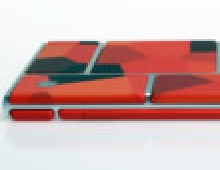
Project Ara Developer Boards Shipping This Month
With Google I/O behind us, Google is getting ready to deliver the first developer boards on which snap-on modules can be prototyped and tested. Developers can apply to get a developer board on Google’s website. The application period will end on July 11 and the first version of the board will ship by the end of July. A new application period for the second version of the board will start on July 12, which will end in September. The updated board will ship in the fall, Google said.
Project Ara is a customizable smartphone which users can mix and match features. Buyers will get an empty phone frame with a screen, and can snap modular parts on and off the back of the handset to add or remove desired hardware features. Google’s board could spark the development of Lego-like modules for the US$50 smartphone, which will start shipping early next year.
Google plans to hold its second Project Ara developer conference at the end of November. Leading up to the conference, the company will release a prototype Project Ara smartphone based on an ASIC in October. Google has said it would hand out 100 free smartphones to beta testers.
Project Ara was started by Google subsidiary Motorola Mobility in October last year with the goal of offering a highly customizable smartphone based on open hardware. Motorola Mobility was later acquired by Lenovo, but Google retained the Project Ara effort, which is now part of the company’s Advanced Technology and Projects (ATAP) division.
Google has said the snap-on modules will be mass-produced via 3D printing, and 3D Systems is Google’s exclusive printing partner.
The first iteration of the developer board will come with a customized version of Android developed by Linaro for Project Ara. The board features a Texas Instruments 4460 processor along with an FPGA, which will enable prototyping of modular parts. A UniPro interface will provide switching to simulate the functionality of the smartphone. It will also have a Secure Digital card attachment interface, GPIO connectors, DSI display controller, and I2C and I2S controllers.




















